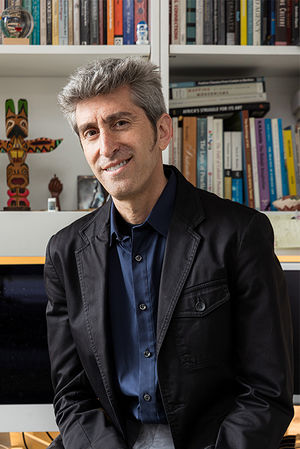
Attributed to Hilamas/Ned Harris (1865–1920), ’Namgis Kwakwaka’wakw
Pencil on paper
Collected by Franz Boas (date unknown)
Boas Collection, Box 2, Folder 18, American Museum of
Natural History Anthropology Archive
Indigenous artists routinely made miniatures representing full-sized objects or legendary narratives. This drawing, made for Franz Boas by ’Namgis artist Ned Harris, may be seen as an extension of this modeling practice. Such pieces became pedagogical tools as they allowed Boas indirect access to ceremonialism and a visual means to disseminate ethnographic knowledge. A number of Harris’s drawings have graphite markings on the back indicating their transfer, and many are scattered unattributed throughout Boas’s texts. In this scene from a Kwakwaka’wakw winter ceremony, a painted dance screen (mawił) is depicted in the foreground, with central eagle and raven crests surrounding a human (possibly an ancestor). Behind this rises a Hamat’sa or “Cannibal” dancer displaying the conventional gesture of spirit possession. Hitherto, Native artworks that employed visual narrative or representation of ritual in action were uncharacteristic; however, when asked to depict ceremony as a means of instruction or illustration, Harris and other artists of the era did so with apparent ease. This adaptation to temporal sequencing represents a distinctly modern interface in modes of visual communication between Native artists and Euro-American viewers.













